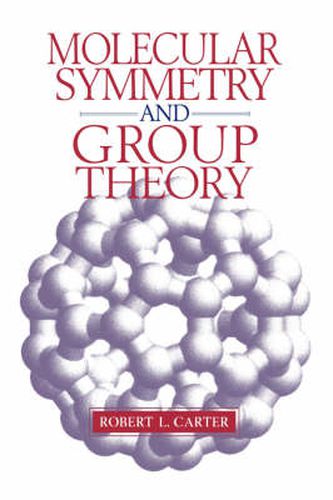Readings Newsletter
Become a Readings Member to make your shopping experience even easier.
Sign in or sign up for free!
You’re not far away from qualifying for FREE standard shipping within Australia
You’ve qualified for FREE standard shipping within Australia
The cart is loading…






A Thorough But Understandable Introduction To Molecular Symmetry And Group Theory As Applied To Chemical Problems! In a friendly, easy-to-understand style, this new book invites the reader to discover by example the power of symmetry arguments for understanding theoretical problems in chemistry. The author shows the evolution of ideas and demonstrates the centrality of symmetry and group theory to a complete understanding of the theory of structure and bonding. Plus, the book offers explicit demonstrations of the most effective techniques for applying group theory to chemical problems, including the tabular method of reducing representations and the use of group-subgroup relationships for dealing with infinite-order groups. Also Available From Wiley: Concepts and Models of Inorganic Chemistry, 3/E, by Bodie E. Douglas, Darl H. McDaniel, and John J. Alexander 0-471-62978-2 Basic Inorganic Chemistry, 3/E, by F. Albert Cotton, Paul Gaus, and Geoffrey Wilkinson 0-471-50532-3
$9.00 standard shipping within Australia
FREE standard shipping within Australia for orders over $100.00
Express & International shipping calculated at checkout
A Thorough But Understandable Introduction To Molecular Symmetry And Group Theory As Applied To Chemical Problems! In a friendly, easy-to-understand style, this new book invites the reader to discover by example the power of symmetry arguments for understanding theoretical problems in chemistry. The author shows the evolution of ideas and demonstrates the centrality of symmetry and group theory to a complete understanding of the theory of structure and bonding. Plus, the book offers explicit demonstrations of the most effective techniques for applying group theory to chemical problems, including the tabular method of reducing representations and the use of group-subgroup relationships for dealing with infinite-order groups. Also Available From Wiley: Concepts and Models of Inorganic Chemistry, 3/E, by Bodie E. Douglas, Darl H. McDaniel, and John J. Alexander 0-471-62978-2 Basic Inorganic Chemistry, 3/E, by F. Albert Cotton, Paul Gaus, and Geoffrey Wilkinson 0-471-50532-3